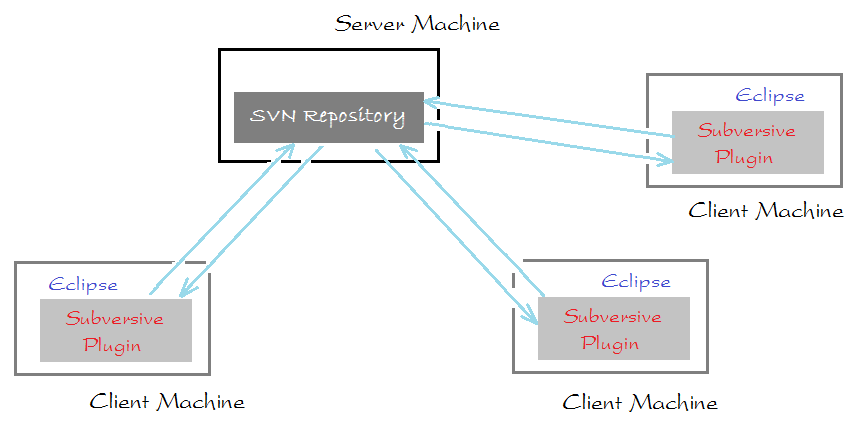
- #Configure svn on eclipse how to
- #Configure svn on eclipse install
- #Configure svn on eclipse Patch
- #Configure svn on eclipse code
A branch is a copy of a location elsewhere in the repository and does not differ in composition from a tag.
#Configure svn on eclipse Patch
If a patch or subsequent change of a tag is considered necessary, then you must create a branch. Another importance of a release tag is to facilitate investigation regarding issues in the associated release. In the preceding example, 3.0.5 indicates the release version to which this tag corresponds.Ī tag is important for future work that might be necessary for patch creation or bug-fix releases. Subversion copy operations are not expensive in terms of storage because the server tracks changes internally. When a release is made, the current trunk source is copied into the tags directory, to a tag corresponding to the release.
#Configure svn on eclipse code
The typical repository layout should resemble the following figure:ĭescription of the illustration maven_dt_008.pngĭevelopment of the main code line occurs in the trunk directories. svn+ssh might not be available on Windows by default.Īlthough Subversion does not require any particular subdirectory structure within a repository, it is a good idea to follow an established convention, as this book does.
#Configure svn on eclipse how to
Refer to the Subversion documentation for information on how to configure other protocols. Svn ls addition to svn+ssh, there are several other protocols that are supported by Subversion. Now that you have created a repository, you can use the Subversion client to perform standard operations against the new repository by using the following base URL:

You can modify this in the REPOS_PATH /conf/nf file. This means that anyone with SSH access, regardless of repository permissions settings, can check out repository files. Ensure that user and group permissions for all files in the new repository reflect the type of access control that you want to have over the repository contents.īy default, anonymous, read-only access is enabled for a new repository. Svnadmin create C:\ciroot\subversion\repositoryĪccess to the repository is controlled by file permissions and the user referenced for accessing the repository through the SVN client. Svnadmin create /ciroot/subversion/repository In this command REPOS_PATH is the absolute path to the local file system.

In this command, REPOS_PATH is the absolute path to the local file system.Ĭreate a repository on a given path by running the following command: The command-line utility called svnadmin is the primary tool for server-side administrative operations.Ĭreate a directory for the repository by running the following command: Now start updating your plugin and you should see change files by following these steps 🙂ĭo let me know if you find any problem with this.After Subversion is installed, you must create a repository. Now Change to “ Java EE Perspective” and checkout folder structure under “ Project Explorer“. This will create local copy of your WordPress Plugin Repository.

Right Click on SVN Repository and Click on Checkout.
#Configure svn on eclipse install

In this tutorial we will go over steps on how to setup Eclipse for WordPress Plugin development and commit. Instead of changing the core programming of WordPress, you can add functionality with WordPress Plugins.Īs I usually do all my Java and PHP development in Eclipse, I started exploring subversion SVN plugin for Eclipse and it worked very well for me. Are you a WordPress Plugin developer? WordPress Plugins allow easy modification, customization, and enhancement to a WordPress blog.


 0 kommentar(er)
0 kommentar(er)
